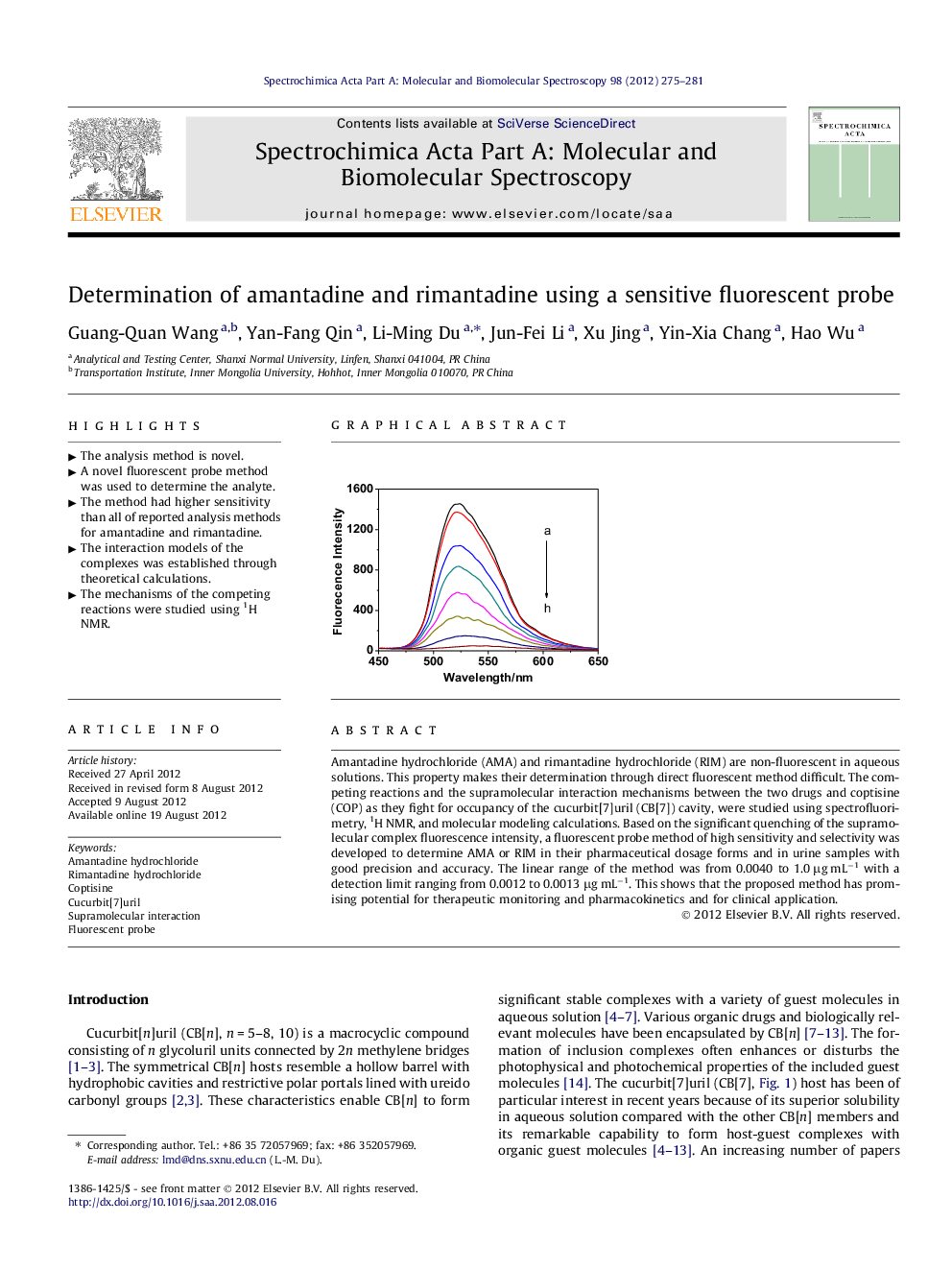| Article ID | Journal | Published Year | Pages | File Type |
|---|---|---|---|---|
| 1235642 | Spectrochimica Acta Part A: Molecular and Biomolecular Spectroscopy | 2012 | 7 Pages |
Amantadine hydrochloride (AMA) and rimantadine hydrochloride (RIM) are non-fluorescent in aqueous solutions. This property makes their determination through direct fluorescent method difficult. The competing reactions and the supramolecular interaction mechanisms between the two drugs and coptisine (COP) as they fight for occupancy of the cucurbit[7]uril (CB[7]) cavity, were studied using spectrofluorimetry, 1H NMR, and molecular modeling calculations. Based on the significant quenching of the supramolecular complex fluorescence intensity, a fluorescent probe method of high sensitivity and selectivity was developed to determine AMA or RIM in their pharmaceutical dosage forms and in urine samples with good precision and accuracy. The linear range of the method was from 0.0040 to 1.0 μg mL−1 with a detection limit ranging from 0.0012 to 0.0013 μg mL−1. This shows that the proposed method has promising potential for therapeutic monitoring and pharmacokinetics and for clinical application.
Graphical abstractFigure optionsDownload full-size imageDownload as PowerPoint slideHighlights► The analysis method is novel. ► A novel fluorescent probe method was used to determine the analyte. ► The method had higher sensitivity than all of reported analysis methods for amantadine and rimantadine. ► The interaction models of the complexes was established through theoretical calculations. ► The mechanisms of the competing reactions were studied using 1H NMR.
